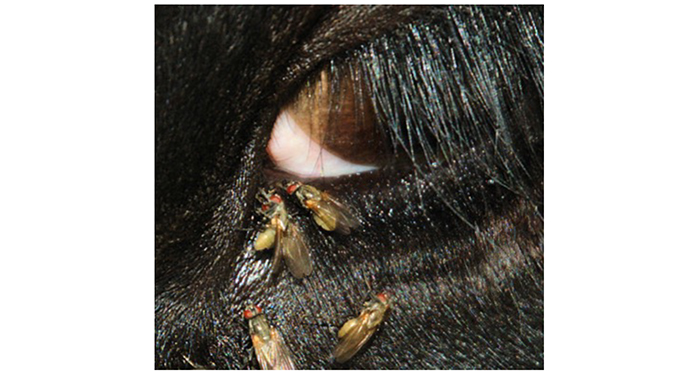Control of Worms Sustainably (COWS) is warning farmers to look out for the annual emergence of head flies (Hydrotaea irritans) from around mid-July, as these are a major source of annoyance for pastured cattle.
These flies hang around until late September, mating and depositing eggs in pasture soil and leaf litter, until colder weather kills them off.
Headflies, with their characteristic yellow abdomen and orange wing base are nuisance flies, as opposed to blood suckling types, such as the stable fly and horn fly. They cause considerable irritation as they feed on proteins from secretions such as saliva, tears, sweat and milk, and use this to mature their eggs.
Dr John McGarry, a fly specialist working at the University of Liverpool Institute of Veterinary Science and contributor to the COWS guide to insect pests of cattle, said:
“Headflies hang around in woodland and travel to and from the cattle several times a day. The males emerge first, followed by the females, usually in the last two weeks of July.
“The males die a week after mating and the females lay batches of eggs in the soil during August and September. These turn into carnivorous larvae which feed on insects in the ground. They grow slowly for 10 months before emerging the following summer as adult flies.”
Cattle affected by headflies move to the shade, are restless and may stamp and swish their tails. This leads to less time spent grazing and decreased performance.
Research has also linked headflies with the transmission of summer mastitis in dairy cows and heifers as they feed on secretions from the teats.
“Treating headfly infestations is usually through applying synthetic pyrethroid chemicals,” said Dr McGarry. “But avoiding grazing on wet, low-lying fields near woods from July to September may reduce headfly numbers. Stock should be checked at least once a day. Head flies are more commonly a problem in the north of the UK than the south.”


